Heart of Dryness: Water Infrastructure and Climate Change
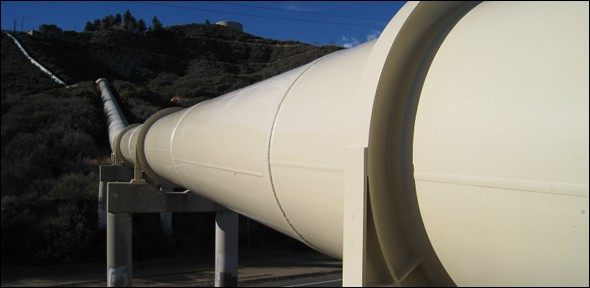
By James G. Workman
Special to Circle of Blue
Copyright 2009 Walker & Company, Excerpt from Heart of Dryness
In the third installment of (read Climate Change Coping Strategies) excerpts from James G. Workman’s Heart of Dryness we reveal the struggle to develop effective infrastructure in the face of climate change. As we see in Botswana, regional conditions mean imported ideas from other countries, like the U.S., don’t always translate in the developing world. His words show all the more how localized water scarcity and solutions are and that solutions should start from the ground up.
The vultures descended to the earth at a vanishing point on the horizon. Sa’ama raced ahead over the sands to see what he could scavenge but, drawing near, he noticed no cloying smell of blood and putrefaction. In clearing, doubt turned to ecstasy.
The vultures huddled in a circle there were not eating; they were drinking.
A small puddle the size of a grass hut had miraculously pooled on the sand. Knowing its worth, Sa’ama hurried back to the clan and told one of the elders, Mozampo, and the band decided to converge on that area, thereafter known as Qxhaetsha, or “vulture pan.” Qoroxloo had inherited it from her ancestors, and through intricate informal arrangements more binding than any contract the members of her band shared in the task of guarding and organizing their lives and activities around it.
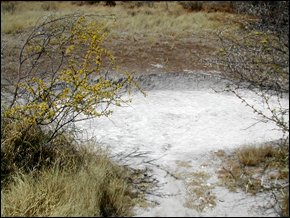
A pan was but one water resource that defined Bushmen territories, for its primary water utility lay during the brief, sudden rainy season when they gathered and filled quickly. But they could dry up even faster. It is no surprise that Bushmen stories rank water and land among the ‘life things’ that give, while the sun, like the hyena, is a ‘death thing’ that takes away.[i] Against that ancient and ruthless enemy the Kalahari Bushmen were locked in a constant struggle, forever struggling to keep water away from the sun.
Botswana had its own creation story, and it too revolved around water infrastructure. Yet instead of chasing vultures and locking up water away from the sun, Botswana had chased after development aid and engineering experts who explained that a new, big, strong, centralized state must rest on new, big, strong, centralized dams.
True, dams were not new technology; water storage dams of Jordan, Egypt and other parts of the Middle East dated back three millennia before Christ.[ii] But the Twentieth century put the concept on steroids. Through the miracle of large dams, the once-impoverished Norway had electrified and enriched its sleepy fjords; formerly barren Australia had impounded 5 trillion gallons into lucrative agricultural exports, and Depression-afflicted America had tamed and transformed great rivers from the Columbia basin to the Tennessee Valley into economic powerhouses. The New Deal’s cornerstone, Hoover Dam, plugged the Colorado River behind a smooth concave wall consisting of 66 million tons of concrete and rising 726 feet, backing up 9 trillion gallons of freshwater –enough to cover Connecticut ten feet deep – into the 115-mile-long Lake Mead, then the biggest, deepest, artificial lake on earth. To dedicate it, on September 30, 1935, President Franklin D. Roosevelt proclaimed of the dam’s iconic power: “I came, I saw, and I was conquered.”[iii]
For any sovereign nation-state, the conquest and control of water resources is a paramount concern. So from its birth, and increasingly over the next four decades, Botswana claimed monopoly power over all rain that fell, all runoff, all aquifers. The future of its modern cities and complex economy would be literally cemented in place, inextricably anchored to a seemingly secure technological foundation. Those present at the creation of Botswana’s capital city thrilled as: “Rising out of the virgin Bush at Gaberones…An earth wall nearly a mile wide dammed the Notwani riverbed and after a few heavy showers of rain, a dam nearly seven miles long was created. Long before the new town was built its water supply was ensured.”[iv]
Or so it seemed. Even as Hoover Dam’s concrete began to set, a few critics began to raise doubts about the hidden costs — one hundred nations spent $2 trillion to build forty-nine thousand dams larger than a four-story building — that were submerged by silent, rising waters. Some questioned the logic of pouring water on a desert until the landscape was a waterlogged and saline wasteland, or of destroying robust protein-rich fisheries to subsidize biofuel crops, or concentrating reservoirs in unstable mountain canyons until the sheer mass of dense water combined with lubrication of tectonic plates to trigger manmade earthquakes that cracked the dam wall and risked populations living downstream.[v] More recently, NASA geophysicists noted how dams’ rapid consolidation of streams near the equator, combined with the weight of water collected in reservoirs, have slightly tilted our planet’s axis and altered the shape of its gravitational field. To quench our thirst, we have distorted Earth’s orbital rotation.[vi]
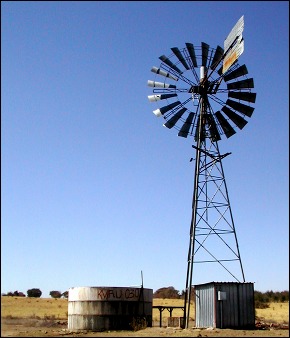
Hard infrastructure critics have been largely muted by crushing demands from a demographically explosive world. Government agencies and development boosters countered that as urban populations rocket each year, more and more government dams have had to send 1.3 trillion gallons of freshwater[vii] racing through pipes into billions of toilets, showers, sinks, garden hoses, and pipes to cities for domestic, industrial, and commercial use. The best way to harness that water still seemed to be a dam. So Botswana citizens weren’t alone in their dependence. The security and stability within most arid nations, including the United States, very much rose and fell with the level of water trapped behind walls.
Gaborone Dam appeared like a mirage on the edge of the Kalahari. Most of the reservoir stood less than ten feet deep. It gathered an average twenty-one inches of raindrops that fell each year within a catchment area a fifth the size of New Jersey. Engineers initially designed it to hold 37 billion gallons, which boiled down to fifty gallons per person per day. That left little margin for error. Yet just as Hoover and Glen Canyon dams supplied western cities like Phoenix, Las Vegas, and Los Angeles; so Gaborone Dam supported the fastest-growing city in Africa.
Botswana’s president Mogae planned to generate jobs and attract foreign investment to make his capital city a continental financial center, a knowledge hub, a technology economy, which could soon overtake Johannesburg and dominate the continent. At current growth and graduation rates, his ambitions appeared well within reach. After all, Gaborone Dam was still full.
In southern Africa, that situation was becoming increasingly rare.[viii] From the day of the dam’s birth the subcontinent’s fleeting wet season had declined a fifth while aridity cut stream runoff in half.[ix] Compounding the loss of rain, evaporation sucked the moisture content out of thin, sandy of soils across semi-arid savanna grasslands. [x] Ominously if predictably, the waters of Gaborone Dam began evaporating inch by precious inch.
Botswana’s Water Utilities Corporation closely tracked, measured, and extrapolated from water levels against the dam wall. From the start of the siege over 2002 the full dam had dipped to 79 percent, then by late 2003 hit 68 percent, soon dropping in 2004 down to 54 percent. Fifty gallons per person had shrunk to twenty-five. Designated workers warily reported the reservoir’s status to the Ministry of Water, whose officials gave the sobering news an upbeat spin. The reservoir had gone down in the past, and while it had never sunk so far, so fast, contraction was inevitable in landscapes with variable rainfall patterns that were largely seen as cyclical. That was the entire point of dams: to save water in wet years to have around in dry years.
That safe assumption failed to account for volatile thirst, as affluence compounded growth. The rich use exponentially more water than the poor; ten gallons for survival becomes a thousand gallons for comfort. Gaborone Dam was built to serve a small, sleepy capital village that within four decades boasted nine shopping malls, a national brewery, a dozen office parks, and two hundred thousand thirsty sprawling people hiring cheap labor to scrub swimming pools, hose down driveways, water exotic gardens, wash air-conditioned cars, and help them forget that they lived on the edge of an encroaching desert.
And now the “wet years” were tapering off. For four decades the mean annual rainfall grew ever more feeble, random and scarce even as mercury notched up a degree. Engineers raised the dam wall to hold an extra year’s storage capacity, but they could not fill empty river beds or store rain that refused to fall.
As towns like Los Angeles sprawled into megalopolises of ten million, America shared Botswana’s compound pain of booming populations and shrinking water storage.[xi] The heat was hurting. Each year the two biggest Colorado River reservoirs evaporated enough fresh drinking water to slake the thirst of every human on Earth for seven months.[xii] Meanwhile, peer-reviewed reports project thirteen years ahead to where Lake Powell becomes an inland delta as Lake Mead dries up completely.[xiii]
Worse, while dry heat and wind inhaled a seventh of the water above, layers of sediment accumulated below, eating up reservoirs at one percent per year.[xiv] When the siege began, two fifths of Gaborone Dam’s water storage was already filled with mud. “In any hot arid place like Africa, building a dam is like offering a sacrifice to the gods,” the regional hydrologist Christine Colvin explained to me. “All those open canals and exposed reservoirs were like putting giant cast-iron pans out in the desert and saying: ‘come and get it!’ ”
Climate change increased erosion, heat, and wind. All three combined to conspire against dams like Gaborone’s. Within months of cutting off waters to Qoroxloo and her band of Bushmen, the government faced the possible end of its own supply.
To keep its dam from evaporating, Botswana wanted to put a lid on it. On vast shallow dams in hot dry places, this task was easier said than done. First engineers had tried pouring oil on top of the water, to create a film barrier. Later they weighed spraying liquid silicone coatings: thin, environmentally friendly, protective layers. In yet another approach they unrolled plastic sheeting, a sort of Glad Wrap, over their giant urban broth. [xv] These experiments reduced evaporation 40 percent in small-scale tests, but outside the laboratory ultraviolet rays dissolved chemicals or strong winds blew sheets away overnight and the country finally gave up.
A more promising tactic, arriving too late, aimed to prevent exposure through artificial aquifer recharge. Though the tools and scale were new, the concept was as old as the Bushmen. Just as Qoroxloo transferred and buried water in sealed ostrich eggs or plastic containers as a future, evaporation-proof reserve against the sun, artificial recharge forced water down into the aquifer fissures and pores beneath cities. Every ten gallons of water pushed underground saved four gallons from evaporation, allowing flexibility and security. The tactic did not make dams obsolete. To the contrary, like the Bushmen’s approach to the pans at Metsiamenong, dams became merely a means of more efficient decentralized storage elsewhere. As the groundwater expert Dr. Alan Simmonds put it, “Once you’ve grabbed the slippery beast you’ve got to get it underground as fast as possible before it can escape.”
Western experts who once instructed Botswana officials to build large dams on thin rivers and keep them full for as long as possible now told them to rapidly empty the dams to double their water capacity.[xvi] It seemed madness, yet drought and evaporation left no alternative.[xvii] So Botswana embraced these technologically sophisticated hydrological tactics, which of course Qoroxloo’s band had perfected over the eons.[xviii] Unfortunately, an analysis of the aquifer found nitrate pollution. Artificial recharge would be difficult, if not impossible. As the level of Gaborone’s reservoir continued to plummet, Botswana realized it had done what no Bushmen, or any species, ever would: sacrifice and foul the very waters it would need to survive.
By late 2004 after a dry austral winter, Gaborone Dam stood at 27 percent of capacity –the lowest in its history. Experts gave it seven months. “In the event that the Gaborone Dam runs dry,” assured nervous officials, the government “has come up with strategies to deal with the situation.”
One hot day water officials revealed that strategy. With twelve gallons per citizen under storage, mandatory austerity was in order. No watering, sprinkling, irrigation or hosing down pavement. No water on playing fields, parks, gardens, or cars. No urinal flushing. No water in swimming pools. No more cheap water. After that, Botswana rationed what little trickled out. Just as it first imposed on Bushmen, Botswana would now restrict and then perhaps cut off freshwater delivery to every citizen.
American cities had imposed similar restrictions from Los Angeles to Atlanta. Such draconian measures worked, at least temporarily — within six months Botswana reported a 35 percent drop in water use —[xix]but often exacted a heavy toll. In the process of rationing water, the governments wrought sudden, inequitable, and often permanent devastation. Trust was shaken. Water-intensive companies were forced out of business. Real estate prices plunged, undermining new development and economic growth. Even water utilities risked slitting their own throats. Rationing reduced their operating revenues and budget; rather than burning off fat, the headquarters office was predisposed to lay off its most skilled and experienced workers, leaving only the slowest, least motivated, and poorest paid staff less able to monitor dam levels, investigate leaky pipes, explore coping strategies, or enforce the rationing it had just undertaken. Rather than austerity, water rationing brought incompetence. Water restrictions not only curtailed civic freedoms but shrank the ability of governments to rule.
Week after week the restrictions clamped down on Botswana. Lawns browned while exotic flowers and shrubs drooped and cracked. In early 2005, the Water Utilities Corporation spokeswoman enthused that Gaborone Dam was still 23 percent full (as opposed to 77 percent empty) but warned that “those who did not comply” with rations and restrictions “would face the full wrath of the law.”[xx] She wasn’t joking. The government set up a hotline for snitches to inform on neighbors, who were slapped with fines and penalties.
It wasn’t the only city to unleash nighttime patrols to crack down on unauthorized outdoor watering, and shut off the taps of repeat offenders. As they faced stiff fines and high prices, Americans also turned on each other. “We’re taking hundreds of calls from people who are ratting out their neighbors,” said Janet Ward of Atlanta’s Department of Watershed Management. “People are angry. What do you expect? If your lawn is brown and blowing away, and the neighbor’s is all green, you know what’s going on.”
As spigots dried up, so did jobs. As jobs dried up, crime rose along with xenophobia, and for the affluent citizens and expatriates the dry hot place stopped being a fun place to live.[xxi] Looking out at the dust of what used to be lush backyards, many began seeking literally greener pastures, departing with their firms, skills, bank accounts, and garden parties with them, just as international donors and development agencies also pulled out of the “economically graduated” country. Facing a withering and contracting economy, the government grasped at straws. Water Minister Charles Tibone toured Gaborone Dam and pronounced that the waters it held would only sustain the city for five more months, whereupon “it would have to look elsewhere.”[xxii] Such as? If the situation continued to worsen, thirsty satellite cities like Serowe and Mahalapye would be cut off, in order to preserve the nation’s capital.
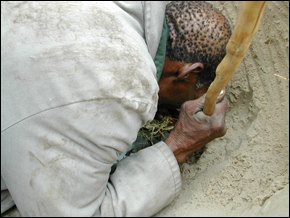
So. This was like Los Angeles announcing that to save itself it would have to cut off water to Orange County and Bakersfield. As water ran out, urban triage began, sacrificing many to save the few.
Some officials pondered rainmaking. But there were no clouds to seed, perhaps driven off by Gaborone’s urban structure. The shiny office buildings, air conditioning, hot automobile engines, kitchens and asphalt roads all accumulated, trapped heat in the city, and scattered any moisture.[xxiii] This phenomenon — the urban heat island effect — helped raise average temperatures from Phoenix to Las Vegas another five degrees since the 1960s and models suggested they would rise another fifteen to twenty degrees over the next generation or so, reaching the point where blood vessels boil, causing massive heatstroke and dehydration.[xxiv]
Four decades after following confident foreign advice, Botswana suffered a mid-life crisis. It had copied the best practices from the United States and Sweden, to the UN and World Bank. It had progressed from abject poverty to stable middle-income status. And yet it was now teetering on the verge of a dry nervous breakdown. To figure out quickly what it was still doing wrong, the country hosted an international water symposium attended by ninety experts from five continents whose countries would endure what Botswana faced right now: rocketing populations, higher demand, shrinking supply, stresses from desertification, and global warming.[xxv] To Botswana’s horror, the upshot was that Gaborone Dam had been a grave and potentially fatal mistake. Centralized large-scale reservoirs made arid countries increasingly vulnerable to climate change. Water supply projects concentrated populations and increased dependence at a time when cities should disperse and decentralize demands. Dams only made sense in rainy countries. In arid areas like Botswana, with temperatures rising a degree every few decades, not only did dams fail to help nations get through dry spells; they actually further increased the risk of drought.[xxvi] New dams could be built, and even hooked to aquifers for recharge. But that would be pointless. By then, scientists said, rivers would have completely shriveled up, with no runoff to store. Far better, said experts, were small-scale, noncentralized, locally managed autonomous water reservoirs, where rain could be efficiently trapped, stored, transported, and used. [xxvii]
In short, out there in the Kalahari, Qoroxloo’s band got it exactly right.
By September 2005, as Gaborone Dam sank to 17 percent, or nine gallons per citizen, the country grew tense. President Mogae asked his people to join him in praying for clouds to release their rain, known as pula, and for the strength to make sacrifices: use less water, treat water as a precious necessity, cultivate arid-adapted indigenous plants, recycle gray water, convert to low- or no-flush toilets, punish water waste, prevent evaporation, harvest rain, and recharge aquifers as a matter of principle.
At the start of the siege, Mogae’s officials cut off water into the Kalahari reserve because “the Bushmen want to become like everyone else.” Now Botswana wanted everyone else to become like the Bushmen.
More Heart of Dryness:
Climate Change Coping Strategies
Video: James G. Workman Discusses the Water and Climate Issues that Haunt Botswana’s Bushmen
Sources:
[i]
[i] Bannister, et al. The Bushmen.
[ii] World Commission on Dams, Dams and Development, p 8.
[iii] Speech by Roosevelt at the Dedication of Boulder Dam, September 30, 1935,” in Edgar B. Nixon, ed., Franklin D. Roosevelt and Conservation, 1911-1945, 2 vols, pp. 438-41.
[iv] Alfred Merriweather, Desert Doctor, p. 92.
[v] McCully, Silenced Rivers; Probe International, “Earthquakes Caused By Dams: Reservoir-Triggered/Induced Seismicity,” 2008.
[vi] Malcolm W. Browne, “Dams for water supply are altering the earth’s orbit, experts say,” New York Times March 3 1996, quoting Dr. Chao Geophysical Research Papers.
[vii] WCD, Dams and Development, p 3.
[viii] Maarten de Wit and Jacek Stankiewicz, “Changes in Surface Water Supply Across Africa with Predicted Climate Change,” Science Vol. 311. no. 5769, March 31, 2006, pp. 1917 – 1921.
[ix] Ian Sample, “Forecast shows Africa to face river crisis,” The Guardian (UK) March 3, 2006
[x] Syukuro Manabe, et al, “Century-scale change in water availability: CO2-quadrupling experiment,” Climatic Change, 64(1-2), 59-76.
[xi] Barry Nelson, et al. “In Hot Water: Water Management Strategies to Weather the Effects of Global Warming,” NRDC, July 2007: The Colorado River Basin was projected to shrink by half from 51 billion cubic meters 1950-1999 to 27 billion cubic meters 2010-2039; Since 1950, spring runoff occurred 1-4 weeks earlier throughout the American West.
[xii] “Estimating Evaporation from Lake Mead,” U.S. Geological Survey, Scientific Investigations Report 2006-5252.
[xiii] Jon Gertner, “The Future Is Drying Up,” New York Times Magazine, October 21, 2007.
[xiv] James Workman, “What Goes Up Must Come Down,” ICWA Reports, Newsletter 23, November 2003; McCully, Silenced Rivers.
[xv] Engineers saw evaporation control as the Holy Grail of water management; many chased it, some imagined they caught a tantalizing glimpse, but none brought home the elusive prize; Ian Scarman, “Evaporative Control Systems: A case study in innovation” University of South Australia, 2003 http://www.cric.com.au/seaanz/resources/9ScarmanEvaporativeControlsystems.pdf
[xvi] “Five Months to Go before Gaborone Dam Dries,” Botswana Daily News, 16 May 2005.
[xvii] David Stephenson, “Maximizing Reservoir Yield in an Arid Region,” unpublished paper, 2005.
[xviii] “Botswana National Water Master Plan,” Snowy Mountain Engineering Corporation, 2005.
[xix] P.K. Kenabatho and B.P. Parida, “Forecasting Water Demand for Effective Water Management During Drought Periods in the Greater Gaborone Area, Botswana,” ActaPress, 2006. http://www.actapress.com/PaperInfo.aspx?PaperID=28249&reason=500
[xx] Tshepho Bogosing, “No improvement in water situation,” Mmegi News, April 7 2005.
[xxi] To keep greens from becoming browns, golf courses had to pay for more expensive recycled water, which stank. The Gaborone Yacht Club could not sail on the Dam as they once had; too many rocks lurked below the surface. The shrinking waters and undiluted treatment plats spread an awful stench. Club swimming pools had to be drained.
[xxii] Daily News, “Five months to go,” May 16 2005.
[xxiii] Tshepho Bogosing, “No improvement.”
[xxiv] Egan, “The First Domed City.”
[xxv] International Conference on Water Resources of Arid and Semi-Arid Regions of Africa (WRASRA), in statement released by Roger Stephenson, conference organizer, University of Botswana
[xxvi] Emmanuale Koro, “Dams in Arid Africa Increase Drought Risk,” Islam Online, August 2, 2004.
[xxvii] Davies & Day, Vanishing Waters.

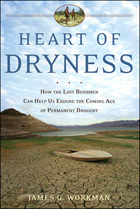

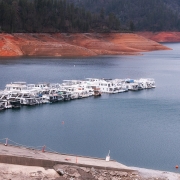
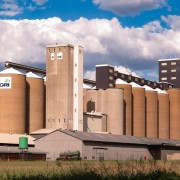
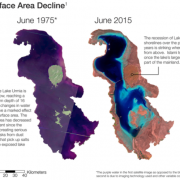
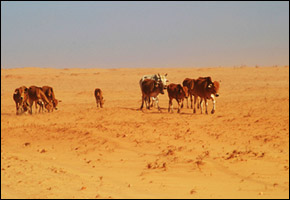
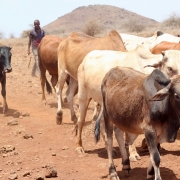




Leave a Reply
Want to join the discussion?Feel free to contribute!